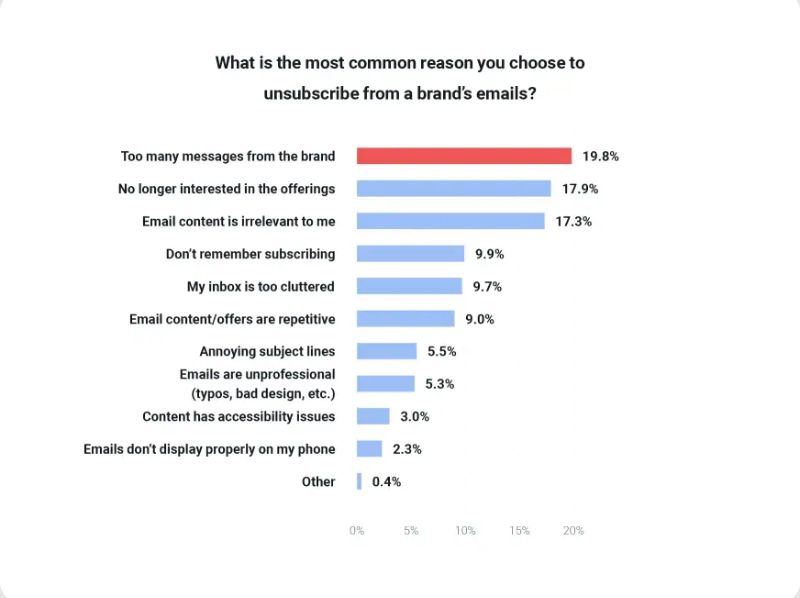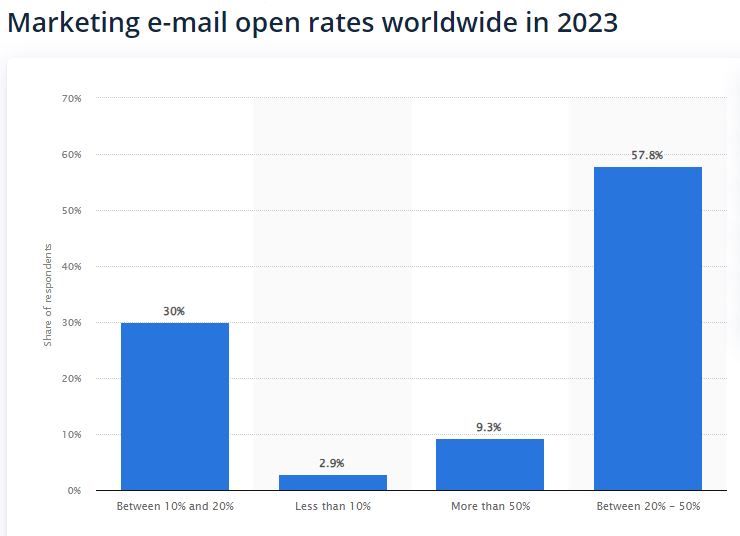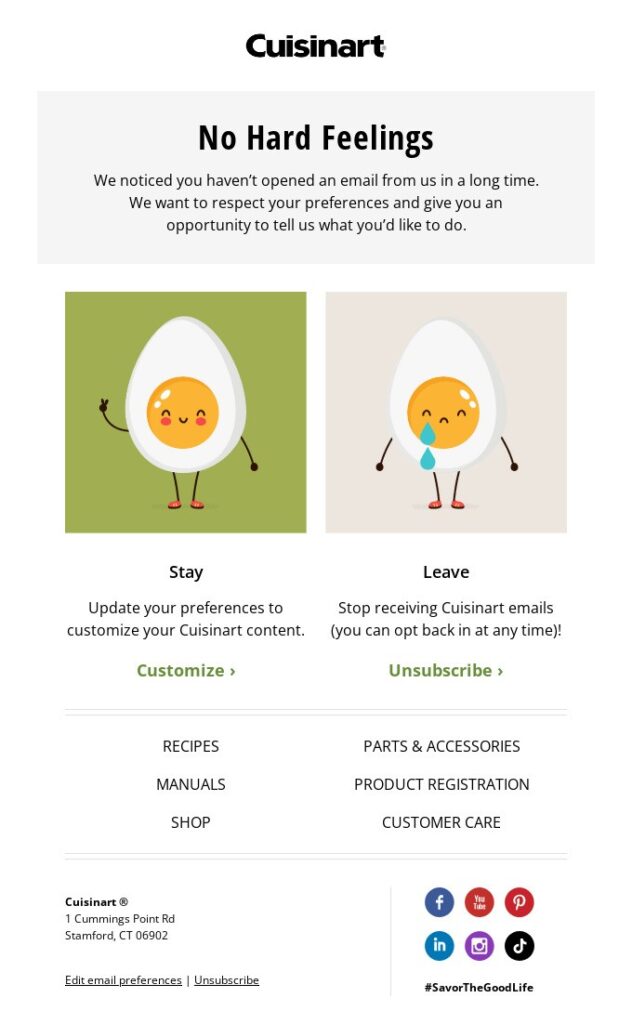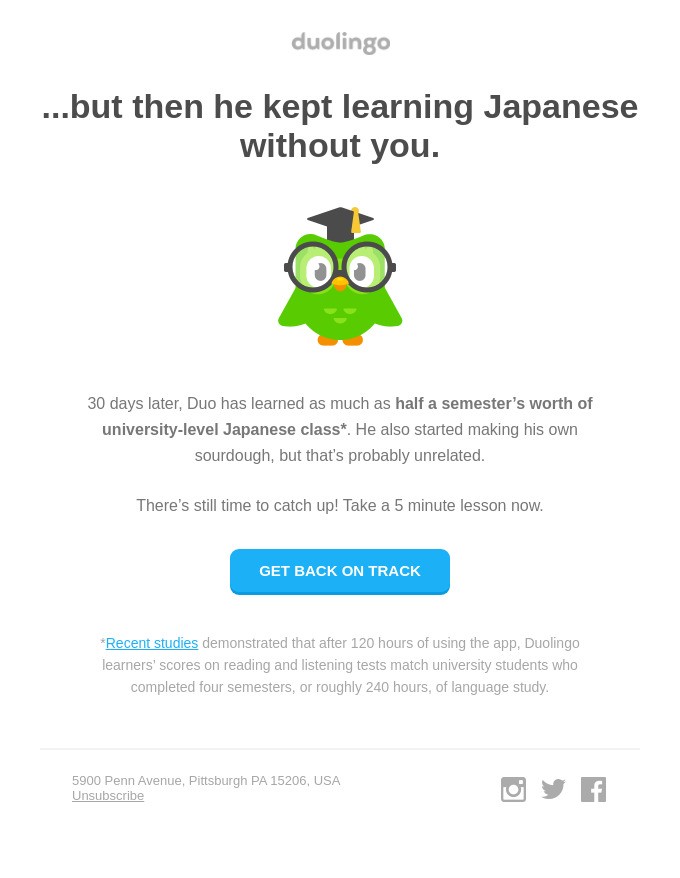Imagine an average day in your subscriber’s life. Their inbox is overflowing with all kinds of emails — important, personal, and promotional messages.
This could cause what we call email fatigue.
Bombarding subscribers with too many messages can make them disengage from their inbox. In fact, almost 20% of subscribers opt out of email communications when they feel overwhelmed.

Image via Sinch Mailgun
The long-term effects of this problem make email marketing challenging. Before your subscribers become fatigued, you should understand its causes and effects.
In this guide, we’ll discuss practical strategies to prevent email fatigue. We’ll also cover proven ways to keep your subscribers engaged and interested.
Let’s get started!
Exploring email fatigue: What it is and why it matters
Email fatigue is very real and can cause a setback in achieving your marketing goals. Let’s briefly discuss this concept and why it matters.
Defining email fatigue
Email fatigue refers to a subscriber’s growing indifference or frustration with receiving emails. This is especially true when the emails become irrelevant or excessive. It can manifest in reduced overall engagement with your email content.
This disinterest doesn’t happen overnight; it’s a gradual process. It starts with your subscribers ignoring your emails. Then, they’re deleting them without reading, and finally, unsubscribing.
You wouldn’t want it to get to the point where your subscribers unsubscribe, so you must take proactive measures to prevent this.
Causes and triggers
Several factors can contribute to the onset of email fatigue, including:
- Frequency of the email: Sending too many emails within a short period can overwhelm subscribers. This can result in them ignoring your messages or unsubscribing from your list altogether. For example, recently, I unsubscribed from the travel agency’s DAILY emails. Send the campaign only if you have something to say. Avoid repeating the same content over and over again
- Irrelevant and repetitive content: This point is closely related to the first one. Even if your content is relevant, try to name when it’s too much of it. Constantly sending repetitive content can make subscribers tune out
- Poor personalization: When subscribers keep receiving emails that don’t align with their preferences or interests, they’re more likely to disengage. For instance, a subscriber wants sustainable fashion trends but instead receives generic newsletters about fast fashion and accessories they never shop for
- Bad timing: Even if your email content is highly relevant and personalized, sending it at the wrong time can cause email fatigue among subscribers. For example, sending too many emails in a short period can cause recipients to feel spammed. Also, sending emails on Monday morning when everyone is at work trying to start a new week might cause them to be ignored
The repercussions of ignoring email fatigue
Failing to address email fatigue can result in severe consequences for your marketing efforts. Let’s explore how email fatigue can impact subscriber engagement and brand reputation specifically.
Impact on subscriber engagement
Email fatigue can affect key performance metrics, resulting in:
- Lower open rates: Even from brands they engaged with, fatigued subscribers become less likely to open emails. So your campaigns won’t be effective and low engagement can cause you sender reputation issues.
- Decreased click-through rates: Subscribers become less willing to click on the links in your emails
- Reduced conversion rates: The number of purchases from the campaign will reduce
- Increased unsubscribe rate: The worst-case scenario is they’ll opt out of your emails, shrinking your audience base
Consequences for brand reputation
Here’s how email fatigue can impact your brand’s reputation in the long run:
- Perceived as spammy: When subscribers are fatigued, they stop opening your emails or mark them as spam. Also, email service providers like Gmail may notice this and blacklist your domain. This can potentially send legitimate emails straight to your subscribers’ spam folders
- Missed opportunities: With low engagement rates, you may not be able to communicate new offers or updates as effectively. Also, burned-out subscribers are less likely to convert to loyal customers
- Legal compliance issues: Sending subscribers irrelevant messages they never signed up for can be considered a violation of GDPR and other data protection regulations. They can complain to the authorities if they believe you’ve misused their data
Proactive measures to prevent email fatigue
Marketers can take proactive steps to ensure subscribers don’t experience email fatigue. Don’t let it reach the point where they unsubscribe from your email list altogether.
Here are some measures to keep your emails fresh and engaging:
Tailoring email frequency
With everything we’ve discussed, you don’t have to blast subscribers blindly. Take time to track your open rates. In 2023, 57.8% of marketers reported open rates between 20 and 50%, while 30% reported between 10 and 20%. Considering that the average is 15–35%, you should email less often if your open rate doesn’t fall in this range.

Image via Statista
Additionally, you can conduct surveys or offer a preference center. This will help you understand what your subscribers want. For example, you can hold a poll for weekly vs monthly emails for promotions or newsletters.
Enhancing content relevance
When your emails deliver value, they keep subscribers interested. Start by using subscribers’ data to personalize email content.
Also, you should diversify content types. Instead of sending only newsletters, spice it up with educational or promotional content. Integrate interactive elements like polls and quizzes to encourage engagement.
Everyone wants to be part of a community. You can invite subscribers to reply to emails with their thoughts or suggestions.
Employing smart segmentation
Segmentation goes a long way to avoiding email fatigue. Group your subscribers based on demographics like age, location, and gender. You can go further by tailoring content based on subscribers’ previous interactions with your emails or their stage in the buyer journey.
You can also separate subscribers into high and low engagement rates. Those with high rates can receive emails more often — say, weekly. Meanwhile, subscribers with low rates can get monthly emails. Also, target them with re-engagement emails.
Implementing subscriber preference options
Another way to combat email fatigue is to allow subscribers to receive relevant and valuable content based on their preferences. Offering a preference center provides insight into subscribers’ interests, enabling better segmentation and personalization for restructuring future email content.
Adhering to subscribers’ preferences shows that you value their inbox space. This builds trust and fosters a positive brand image.
See how Cuisinart empowers its subscribers by allowing them to customize their email preferences.

Image via Really Good Emails
Implementing re-engagement strategies to combat email fatigue
If email fatigue has set in, re-engagement campaigns can reignite subscriber interest.
Designing effective re-engagement campaigns
These tips can help you win back subscribers who haven’t interacted with your brand in a while:
- Catchy subject line: Spark curiosity by personalizing the subject line and keeping it short. For instance, “Hey Joan! Did you miss out on something big?”
- Avoid being sales-y: Highlight how your product solves the customer’s problem instead of merely listing features
- Offer exclusive content: Provide access to discounts, product sneak peeks, or informative guides
- Use compelling CTAs: Your email should end with a call to take a specific action
Check out this win-back email example from Duolingo. The CTA stands out inside a bright blue button.

Image via Really Good Emails
Measuring success and optimizing strategies
You can use these methods to track the effectiveness of your re-engagement campaigns:
- Track email performance: Metrics like open rates and re-engagement rates can help you gauge campaign success
- Analyze engagement data: Look for trends in your metrics to understand what’s working and what isn’t
- Leverage A/B testing: Test different subject lines, email content, and CTAs to find out which strategy drives the most clicks
- Optimize for continuous improvement: Keep tracking, testing, and refining your approach to ensure optimal results
Wrap up
In the end, we can agree that email fatigue is a significant challenge. However, it’s not impossible to overcome. We’ve discussed the causes and consequences. We’ve also covered proven strategies for keeping your campaigns engaging.
Key tactics include tailoring email frequency and employing smart segmentation. The goal is to respect your subscribers’ time and preferences while delivering value in every message.
When fatigue sets in, you can leverage our re-engagement campaign tips to reignite subscriber interest.
